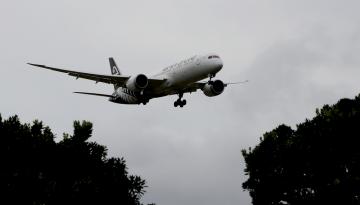Air New Zealand will restart flights to the majority of the country's domestic airports when the Government says it's safe to enter alert level 2, the airline has revealed.
However CEO Greg Foran admits it will operate at just 20 percent of its pre-COVID-19 domestic capacity - and warns it'll be "a slow journey" to scale it back up.
However several of New Zealanders' favourite destinations will be able to be flown to and from once alert level 3 restrictions lift.
The Air New Zealand routes operating at alert level 2
- Auckland to/from: Christchurch, Gisborne, Kerikeri, Napier, Nelson, New Plymouth, Palmerston North, Tauranga, Wellington, Whangarei and Queenstown.
- Christchurch to/from: Dunedin, Invercargill, Nelson, Palmerston North, Wellington and Queenstown.
- Wellington to/from: Blenheim, Gisborne, Hamilton, Napier, Nelson, New Plymouth, Rotorua and Tauranga.
Services to Taupo, Hokitika and Timaru will return as demand allows, Foran says.
The new announcement comes just moments after Air New Zealand customers were told that flights scheduled for May and June were now cancelled.
This followed a report on Thursday that said our national carrier would be culling 300 pilot jobs, with the remaining 900 pilots taking a 30 percent pay cut.
Foran says Air New Zealand has been keen to start domestic services "as soon as practicably possible", in an effort to support New Zealand’s economic recovery and connect family, friends and businesses.
But he admits that even when the country moves out of alert level 1, all of the airline's domestic destinations will see fewer flights and reduced frequencies.
"This is the harsh reality of closed international borders and a depressed domestic economy, with more Kiwis in unemployment and people watching what they spend," he says.
Foran also warns Air New Zealand's fares will jump well above pre-coronavirus levels, in order to recoup some of the fares lost as a result of the Government's physical distancing protocol.
"One-metre social distancing means we can only sell just under 50 percent of seats on a turboprop aircraft and just 65 percent on an A320," he said.
"On that basis, to ensure we cover our operating costs, we won't be able to offer our lowest lead in fares until social-distancing measures are removed."






